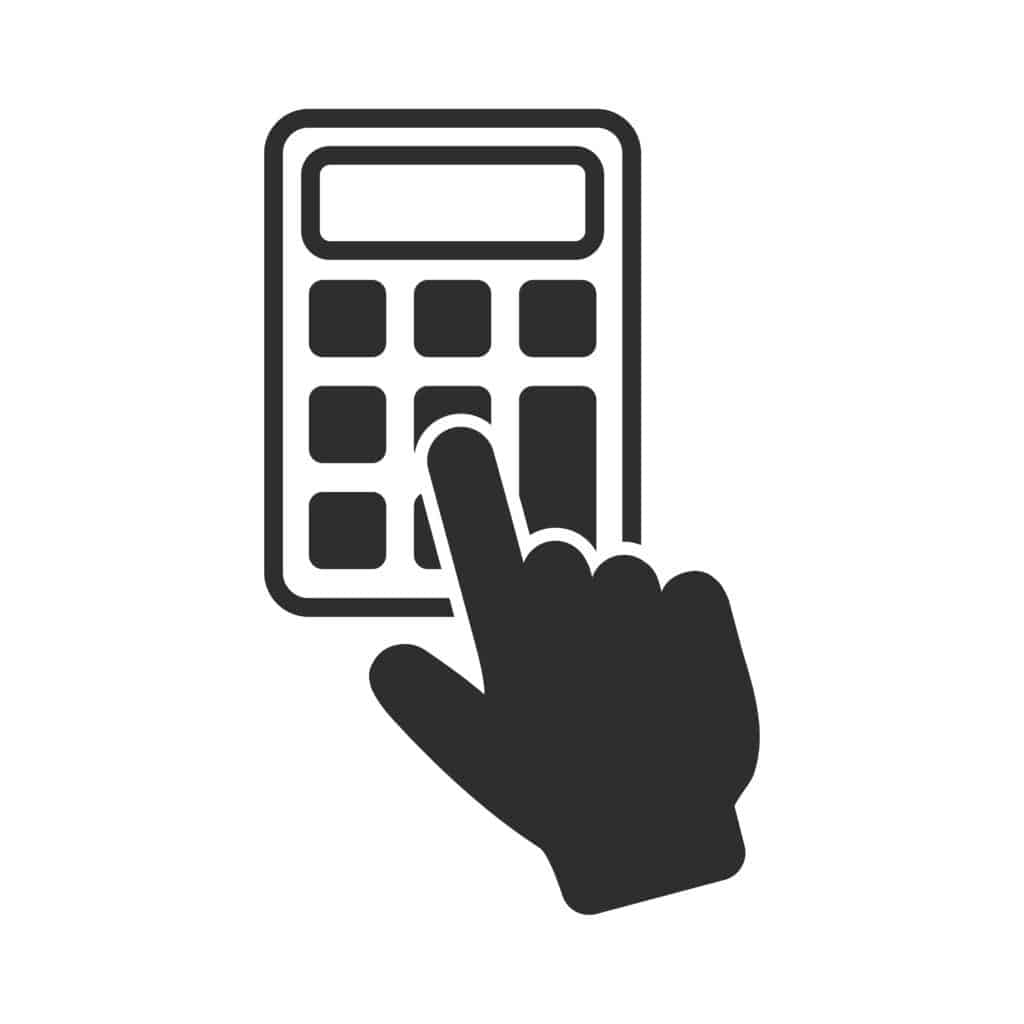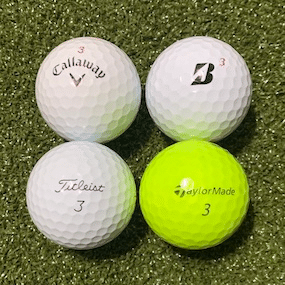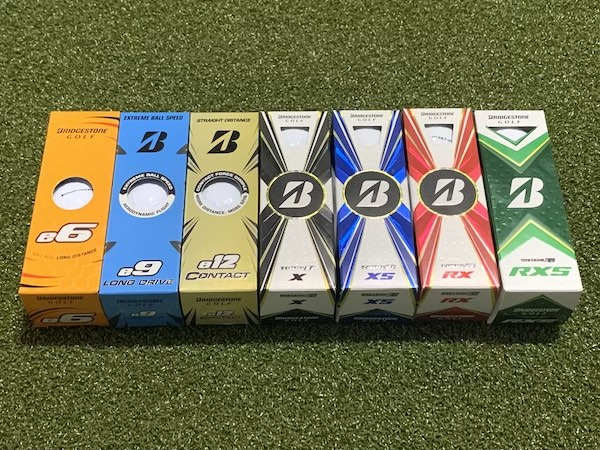Have you ever wondered if you can get better performance in your golf game with the right ball? Yes, choosing the right golf ball can make a significant difference in your golf game. Let’s delve into the world of golf ball fitting and discover how the right ball can enhance your performance on the course.
Discover Your Perfect Ball: Interactive Quiz
Knowing Your Swing Speed
Understanding your swing speed is an important factor in determining which ball will perform the best for you. If you need to estimate your swing speed, simply put your driver distance into the calculator. For best results, please use the distance you would get from a very well struck ball.

Choosing the right golf ball is not as simple as picking the most popular or expensive one. Your game, personal preferences, skill level, and even budget play a significant role in determining the best golf ball for you. Our interactive golf ball selector quiz can assist you here. It considers all these factors and more, providing you with tailored suggestions that align with your requirements.
But why use an interactive quiz? Well, with the myriad golf balls available, finding the right one can be like searching for a needle in a haystack. The quiz streamlines this process, aiding in the selection of the perfect golf ball for your game.
How to Use the Quiz
The quiz is simple and straightforward. Choose your response to each question, once you’ve answered all the questions, the system generates recommendations for the optimal golf ball for your game.
When responding to the quiz, consider your:
Swing speed (we have a calculator to help with this)
Ball flight
Spin rate
Feel preferences
These factors can significantly influence the performance of the golf ball and ultimately, your game.
Understanding the quiz results are simple. The quiz identifies golf balls that best suit your preferences and playing style. These are based off of our own independent reviews. Review the recommendations and select the golf ball that resonates with your needs and preferences.
Each of the golf ball recommendations will also have links to more in-depth reviews. If you would like to learn more about a specific ball, or see performance data associated with a specific ball, just follow the provided link.
Remember, the right golf ball can make a world of difference in your game.
Personalized Golf Ball Recommendations

The quiz’s objective isn’t just to ask questions but to provide tailored golf ball suggestions that match your playing style. For instance, based on your answers, the quiz might recommend the Titleist Tour Speed golf ball. This 3-piece urethane golf ball provides high ball speed off the tee, an ultra-thin urethane cover, and will get more golfers some extra distance. It allows you to hit more fairways with its low spin off the tee.
These personalized suggestions make the task of finding the perfect golf ball much simpler.
The Science Behind Golf Ball Fitting
Golf ball fitting is a meticulous process that takes into account various aspects of a player’s game. It’s not a one-size-fits-all approach; instead, it’s a personalized method that factors in a player’s unique characteristics and preferences.
One of the primary factors considered during a golf ball fitting is a player’s swing speed. This is crucial as it determines how much compression a golf ball needs for optimal performance. For instance, players with faster swing speeds typically benefit from golf balls with higher compression ratings, as these balls can withstand the impact better and result in greater distance.
Another critical aspect is a player’s preference for feel. Some golfers prefer a softer feel, which provides more control and a better ability to shape shots. On the other hand, some may prefer a harder feel for more distance. The feel of a golf ball is often determined by its cover material and construction.
The ball’s flight characteristics, such as trajectory and spin rate, are also considered during a fitting. These characteristics can significantly influence the ball’s performance on the course. For instance, a ball with a higher spin rate can provide more lift and a steeper landing angle, which can help the ball stop more quickly on the green.
Lastly, a player’s skill level and playing style are also taken into account. Beginners or high-handicap players might benefit from golf balls designed for more forgiveness and distance, while low-handicap players might prefer balls that offer more control and feel.
In essence, golf ball fitting is a comprehensive process that considers various factors to ensure a player gets the most out of their game. So, the next time you’re selecting a golf ball, remember, it’s not just about the brand or price, but about finding the ball that best suits your game.
Expert Tips for Choosing the Right Golf Ball
Choosing the right golf ball is a significant decision that can impact your golf game. Your playing style, for instance, can greatly influence your choice of golf ball. The speed at which a golf ball is hit can affect its flight characteristics, trajectory, and control, which can significantly impact your performance. The feel of the golf ball can also impact your confidence and control over your shots.
If you’re a beginner, consider factors like price, durability, and spin rates when selecting a golf ball.
The golf ball’s construction also significantly impacts its performance. Here are some factors to consider:
Compression: Higher-compression balls are favored by golfers with higher swing speeds, as they can provide greater distance and control.
Cover material and construction: The material and construction of the ball’s cover can also affect distance and greenside control.
Dimple design: The dimple design on the ball’s surface plays a role in influencing its trajectory, distance, and shot consistency.
Popular Golf Balls and Their Unique Features

There are several popular golf ball brands on the market, each with its unique features and benefits. Some of the most sought-after golf balls include:
Titleist
Bridgestone
Callaway
Srixon
TaylorMade
These golf balls are known for their quality and performance. There are also very popular golf ball brands that offer very high quality golf balls at a discounted price since they are direct to consumer. Some of those include:
Titleist ProV1 golf balls offer players:
Exceptional short-game control
Good distance
Higher launch
Plenty of greenside spin
The ProV1x Left Dash version provides golfers with both low and high swing speeds exceptional distance off the tee.
Another popular option is the Bridgestone Tour B RX golf balls, which are suitable for players with a driver swing speed of less than 105mph. They offer excellent distance and spin control, making them a viable alternative to other premium golf balls such as the Titleist Pro-V1x or Titleist Tour Speed.
How to Test and Evaluate Golf Balls on the Course
It’s necessary to test and assess golf balls on the course to ascertain if a particular ball suits your requirements. Consider your desired trajectory and how certain approach shots perform on the green.
The spin rate of a golf ball can significantly impact its performance on the course. A higher spin rate can result in increased lift and a steeper landing angle, allowing the ball to stop more quickly on the green. Conversely, a low spin rate can lead to a flatter trajectory and more roll upon landing.
To gauge the feel of a golf ball on the course, experiment with various shots and observe the ball’s response off the clubface and to your swing. Listen to the sound the ball makes when it is hit and pay attention to the feedback received from the ball. Test the golf ball alongside other balls to compare the feel. Remember, the feel of a golf ball is subjective, so it is important to find the one that suits your preferences and playing style.
The Role of Clubs in Ball Performance
Golf clubs significantly influence the performance of a golf ball. Different types of clubs, such as drivers, irons, and wedges, feature distinct designs that can influence the trajectory, distance, and spin of the ball. The loft, lie angle, and center of gravity of the club head also contribute to ball performance. Moreover, the type of shaft used in the club can affect the trajectory and distance of the ball.
Clubhead speed is a critical factor in golf ball performance. An increased clubhead speed translates to a higher ball speed, which consequently affects the distance the ball is able to travel.
The loft of a golf club also has a direct influence on ball flight. Higher lofted clubs impart more backspin on the ball, resulting in a higher trajectory and increased lift, while lower lofted clubs produce less spin and a lower ball flight.
Golf Ball Fitting Services: In-Person and Online Options
Golf ball fitting services are available to cater to your needs, whether you prefer an in-person consultation or the convenience of online services. Worldwide Golf Shops, for instance, offer complimentary golf ball fittings both in-person and online.
Titleist provides golf ball fitting services both online and in-person. Whether you prefer to collaborate with a technician who evaluates your swing and ball flight characteristics in real time or you prefer to go through the fitting process remotely using online tools, the aim is the same: to help you find the ideal golf ball for your game.
At PGA Tour Superstore, custom fittings are conducted by highly trained professionals using the latest club fitting technologies. What sets them apart is their brand-agnostic fitting, meaning the fitters have no incentive to promote certain products or brands. The focus is entirely on helping you find the right golf ball for your game.
Here at Big Tees Golf, we aim to provide you with a brand-agnostic online service, and identify a variety of different golf ball recommendations at various price-points.
Summary
Choosing the right golf ball is more than just a matter of brand or price; it’s about finding the ball that matches your game, preferences, and needs. From understanding the science behind golf ball fitting to testing and evaluating golf balls on the course, this guide has hopefully enlightened you on your quest to find the perfect golf ball.
Remember, the right golf ball can enhance your performance, improve your skills, and elevate your game. So, why not take the quiz, try out some recommended golf balls, and see the difference it can make? After all, in the game of golf, every shot counts!
Frequently Asked Questions
Do Golf Balls Matter?
Yes, golf balls matter. But that doesn’t mean you need an expensive ball. I believe the single most important consideration here is consistency. Every golf ball will perform differently. It might be subtle differences, but as you play with a specific ball you start to get used to how it reacts in different situations. This makes you adjust. If you are constantly throwing a different make/model golf ball into the mix, you’ll never get the chance to dial things in. So at a minimum, pick one and stick with it!
How do I know what golf ball is right for me?
We have thousands of data points on each golf ball that we have tested, and data from independent studies. With that information, we know how well each ball performs at varying swing speeds. Once we know your swing speed, it is a matter of finding your preferences for feel, performance etc.
Are 25 year old golf balls still good?
Given that golf balls have an average shelf life of 10 years, a 25 year old golf ball is likely no longer in good condition.
What is the best golf ball for an 85 mph swing?
For an 85 mph swing speed, there are several golf balls that perform exceptionally well. The Titleist ProV1x performs very well for distance, but it is a very expensive option and a firm ball, which some golfers dislike. The Titleist AVX is a softer option, but it is also very expensive. The Bridgestone e6 is a great option at a much lower price. There are also several golf balls in a mid-price range that would suite an 85mph swing speed.
How does the golf ball fitting quiz work?
The golf ball fitting quiz works by asking you questions about your golf game and preferences, then using your answers to generate tailored recommendations based on thousands of data points on each of the golf balls we’ve tested, and have obtained from other independent studies.
What factors does the quiz consider when making recommendations?
The quiz considers your game, personal preferences, skill level, and budget when making recommendations.
